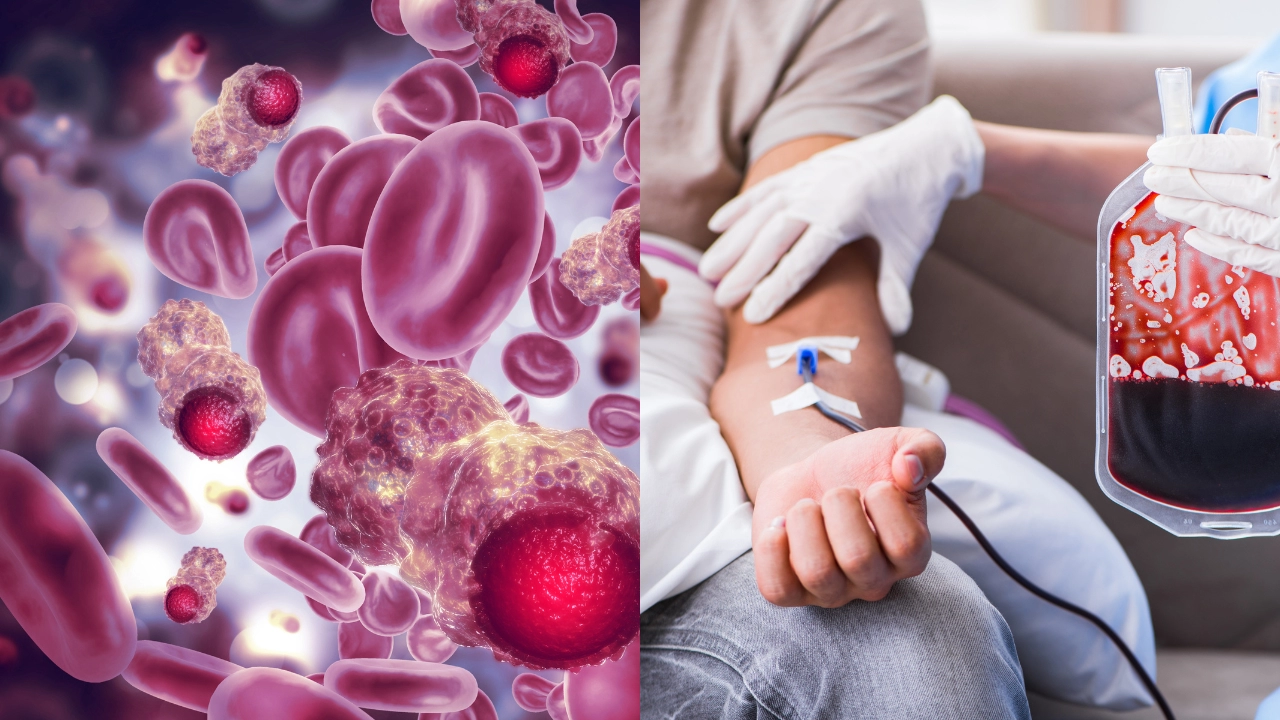Supriya Ramesh • 17 Sep 2024
Experts Debunk 8 Very Common Blood Cancer Myths; You Will Be Surprised

Image - Canva
Blood cancer remains a significant health challenge, with over 100,000 cases diagnosed annually in India. A notable portion of these patients are children, and many face life-threatening complications as the cancer disrupts normal blood cell production and function. Despite advances in treatment options like stem cell transplants, public misconceptions hinder access to life-saving care. Experts Nitin Agarwal, Head of Donor Request Management at the DKMS-BMST Foundation India and Dr Prashant Mehta, Senior Consultant, Medical Oncology at the Amrita Hospital Faridabad shed light on these myths and the reality behind them.
Myth 1: Blood Group Matching is Enough for Stem Cell Transplants
One prevalent misconception is that a matching blood type guarantees a successful stem cell transplant. Agarwal clarified that stem cell matching is far more complex, involving Human Leukocyte Antigen (HLA) markers. “A successful transplant requires a near-perfect match of 10 out of 10 relevant HLA characteristics,” he explained. Blood type alone does not determine compatibility; instead, the donor's HLA profile must align closely with the patient’s. While family members can be potential donors, most patients—around 70%—will need unrelated donors with compatible HLA markers.
Myth 2: Stem Cell Donation is Painful and Risky
Another common concern is that donating stem cells is a painful, risky procedure. Agarwal dispelled this myth, stating that stem cell donation is minimally invasive and akin to donating platelets. The process typically takes four to six hours, during which the donor’s peripheral blood stem cells are collected. “Donors usually experience no significant pain and can leave the clinic the same day,” he said. The body replenishes the donated stem cells naturally within weeks, and any flu-like symptoms from the pre-donation injections are temporary.
Myth 3: Ethnicity Doesn’t Matter in Finding a Match
A widespread belief is that ethnicity plays no role in finding a matching donor. However, Agarwal said that ethnic background is a crucial factor. “Patients are more likely to find a match within their ethnic group because people from the same group tend to share similar tissue traits,” he said. With over 25,000 known HLA characteristics, the process of finding a perfect match is extremely rare, particularly for individuals of mixed ethnic backgrounds.
Myth 4: Family Members Can Always Be Donors
Contrary to the belief that family members are the best donors, only about 30% of patients find a suitable match within their families. “The remaining 70% require unrelated donors,” Agarwal pointed out. This highlights the importance of increasing the pool of registered stem cell donors worldwide, especially in ethnically diverse countries like India.
Myth 5: Blood Cancer is Incurable
Dr Mehta addressed another damaging myth. He said: “All blood cancers are treatable, and many are curable with timely treatment.” Blood cancers are categorised into three main types—Lymphoma, Leukemia, and Myeloma—each with various subtypes that respond differently to treatment.
Myth 6: Blood Cancer is Always Aggressive
Not all blood cancers are rapidly fatal. Dr Mehta explained that some types, such as Chronic Lymphocytic Leukemia (CLL) and certain slow-growing lymphomas, may not require immediate treatment and can be monitored for years. “Leukemias and lymphomas can either be slow-growing or aggressive, and the treatment approach depends on the type and progression of the cancer,” he said.
Myth 7: Chemotherapy is the Only Treatment for Blood Cancer
While chemotherapy remains a vital treatment, its role is diminishing with the advent of targeted therapies and immunotherapy. Dr Mehta said that common blood cancers, such as CLL and Chronic Myeloid Leukemia (CML), are increasingly treated with oral targeted drugs, reducing the need for chemotherapy. Even for aggressive types like acute leukaemia, immunotherapy is becoming a standard part of treatment protocols.
Myth 8: Bone Marrow Transplant is a Surgical Procedure
Finally, Dr Mehta dispelled the myth that a bone marrow transplant involves surgery. “The procedure, now referred to as a stem cell transplant, does not involve cutting any bone,” he clarified. For donors, it is similar to giving blood, with negligible side effects. The goal is to replace the patient’s diseased bone marrow cells with healthy ones from a compatible donor, a process that can dramatically improve outcomes for patients.
Get Latest News Live on Times Now along with Breaking News and Top Headlines from Health and around the world.